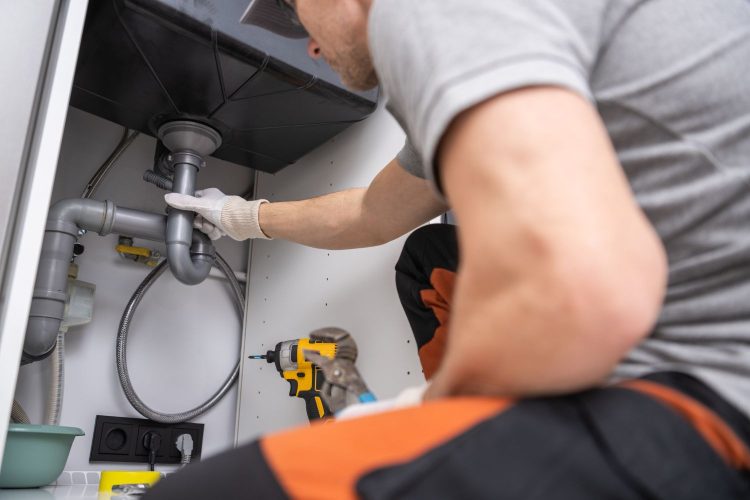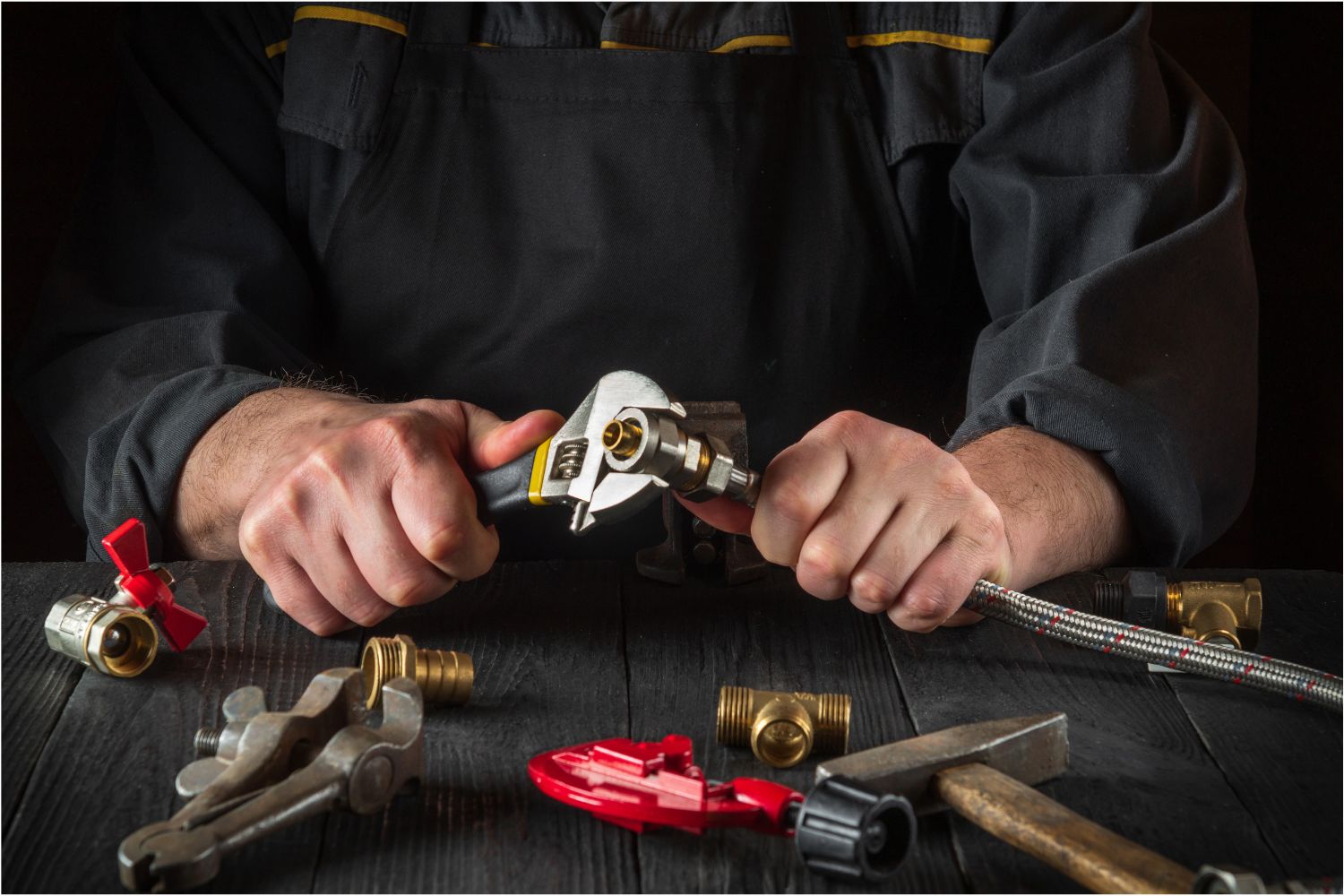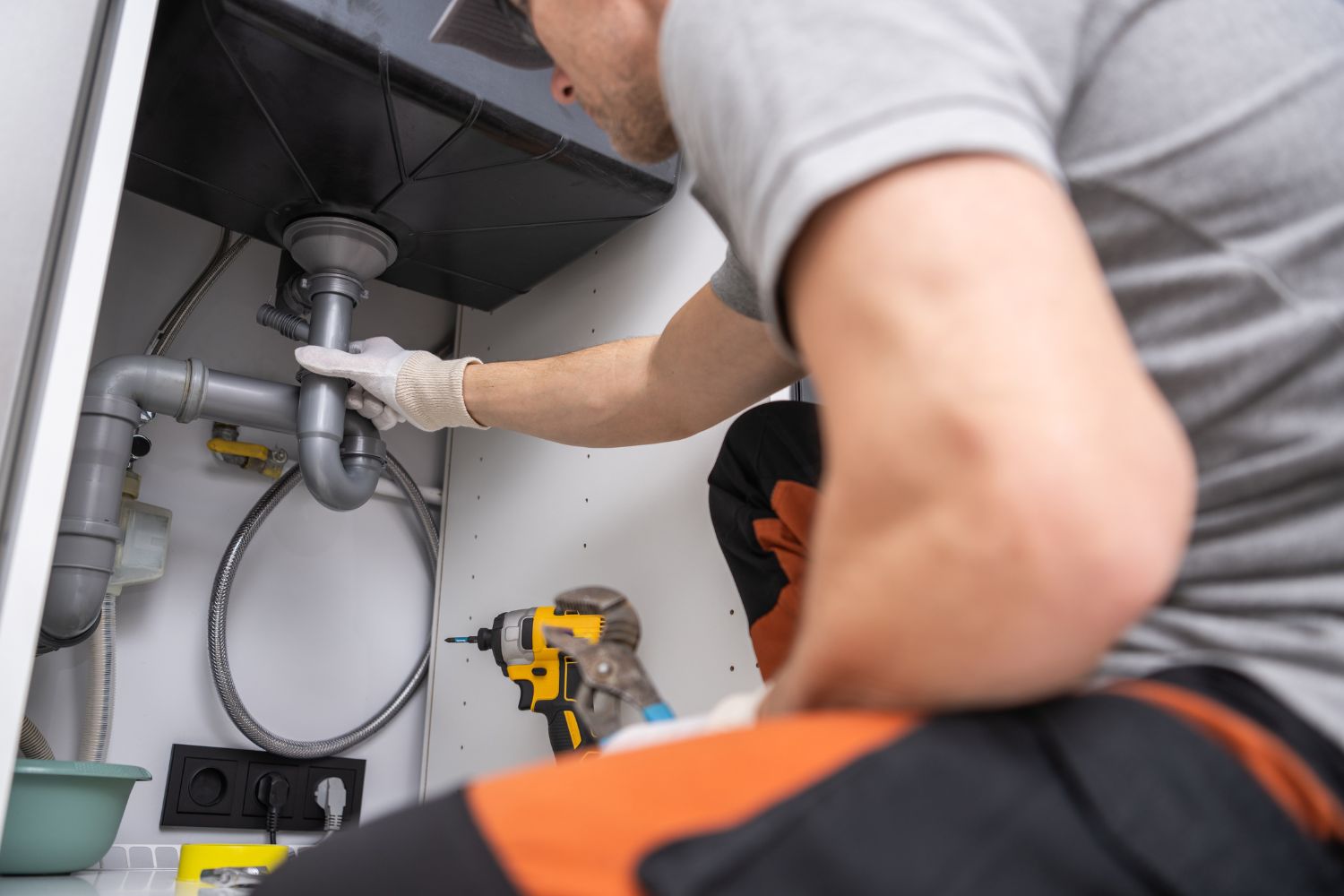As a homeowner, it’s easy to overlook the intricate details of your plumbing system—until something goes wrong. One of the unsung heroes of your plumbing system is the P-trap. It’s a simple component, but without it, your home would be flooded with unpleasant odors, and your plumbing system wouldn’t work nearly as efficiently. So, let’s dive into what a P-trap is and how it works to keep things flowing smoothly in your home.
What is a P-Trap?

A P-trap is a small but mighty fitting found under sinks, bathtubs, and showers. Shaped like the letter “P”—hence the name—it’s designed to prevent sewer gases from sneaking into your home. The P-trap works as a barrier, helping to ensure your plumbing system functions properly and maintains a healthy, odor-free environment in your home.
You’ll typically find the P-trap connected to the drainpipe of your sink or shower. Its unique shape, which includes a bend, holds water, forming a seal that blocks sewer gas from entering your living space. The P-trap design works for both drainage systems, whether it’s for your kitchen sink, bathroom sink, or even tubs and showers.
How Does a P-Trap Work?
A P-trap functions using simple physics—water flows in, and some stays behind. When you use your sink or shower, the wastewater travels through the drain and passes through the P-trap. The bend in the pipe holds a small amount of water, forming a water seal. This barrier prevents unpleasant sewer gases from escaping back into your home.
With every use of the fixture, new wastewater replaces the old water in the trap, ensuring that the seal is maintained. In other words, the P-trap continuously flushes the curve with fresh water, preventing sewer odors from making their way into your home. The shape of the P-trap, which is a U-bend, is what creates this crucial water seal.
Why is a P-Trap Important?
The importance of a P-trap goes beyond just keeping your home smelling fresh. It also prevents harmful sewer gases from entering your living space. Sewer gases, which can include methane, are not only foul-smelling but can also be dangerous. Without a P-trap, these gases would have an easy path to enter your home, posing health risks to everyone inside.
In addition, the P-trap helps to prevent clogs. As wastewater flows through the drain, the curve in the pipe catches solids, debris, and sediment, preventing them from traveling down the drain and causing blockages in your plumbing system. This is especially important when it comes to preventing build-ups that can lead to more serious issues.
P-Trap Installation: Easy But Important
Installing a P-trap is relatively simple, but ensuring a proper connection is crucial. For a sink drain P-trap or shower p-trap, you need to measure and cut the drain pipe to the correct length. A P-trap kit typically includes the necessary components, such as a J-bend, slip joint washers, nuts, and a wall tube connector to securely attach everything.
The steps for installation include:
- Measure and cut the drain pipe: Make sure to measure the required length for the wall tube and cut accordingly.
- Use a slip joint washer: This is necessary for creating a proper P-trap seal. Insert the wall tube connector into the pipe and tighten it with the nut.
- Connect the J-bend: Attach the J-bend section of the trap to the tailpiece of the fixture drain. Tighten the nut to ensure the connection is secure.
Many P-trap kits also come with a cleanout feature for easy access in case of future maintenance or cleaning purposes. This access point allows for easier removal of any debris or clogs that may accumulate over time.
Common P-Trap Problems
While the P-trap is a reliable and low-maintenance component, there are a few common issues you should be aware of. Over time, debris such as hair, soap, or food particles can collect in the trap and cause a clog. If you notice slow drainage or unusual odors, it might be time to clean the P-trap.
Another issue is a dry P-trap. If a sink or shower hasn’t been used for a while, the water in the trap can evaporate, breaking the seal and allowing sewer gases to enter your home. To prevent this, make sure to run water through unused fixtures occasionally to keep the P-trap filled.
Leaks can also occur if the connections become loose. If this happens, it’s important to check the connections and fittings to ensure that the P-trap seal is intact. Tighten the nuts and washers to prevent water from leaking.
Types of P-Traps
There are two main types of materials used for P-traps: brass and PVC. Each has its advantages and disadvantages, depending on your needs.
- Brass P-traps: These traps are durable and often come with a chrome plating, making them aesthetically pleasing, especially when exposed. However, brass can corrode over time, especially if exposed to moisture frequently.
- PVC P-traps: These plastic traps are resistant to corrosion and are lightweight, making them easier to install and disassemble if necessary. While they may not have the same appearance as brass, PVC is a popular choice for homeowners looking for a cost-effective solution. ABS plastic is another option, known for its durability and resistance to acids.
Both materials serve the same purpose—preventing odors from entering your home—but choosing the right one depends on your budget, preferences, and the specific installation needs of your plumbing system.
Do You Need to Replace Your P-Trap?
Although P-traps don’t require regular maintenance, they may need to be replaced over time due to wear and tear. If you notice a significant clog, persistent odors, or leaks, it may be time to inspect or replace your P-trap. Fortunately, P-trap installation and replacement are straightforward for professionals, and P-trap kits are available to make the job even easier.
If you’re unsure whether your P-trap needs to be replaced, a professional plumber can provide expert advice and handle the installation or repairs. Keeping your plumbing system in top condition will help avoid more costly repairs down the line.
Conclusion
In the world of plumbing, the P-trap is an essential component that plays a vital role in ensuring your home stays comfortable and free from unpleasant odors. Its simple design works effectively to block sewer gases and keep clogs at bay. Whether you’re installing a Sink Drain P-trap, a Shower p-trap, or dealing with other plumbing needs, ensuring your P-trap is in good condition is key to maintaining a healthy and efficient plumbing system.
At MyBoisePlumbers, we understand the importance of a well-functioning plumbing system. If you need help with your P-trap installation, maintenance, or repairs, our expert team is here to provide reliable and affordable services for your home.








One Response